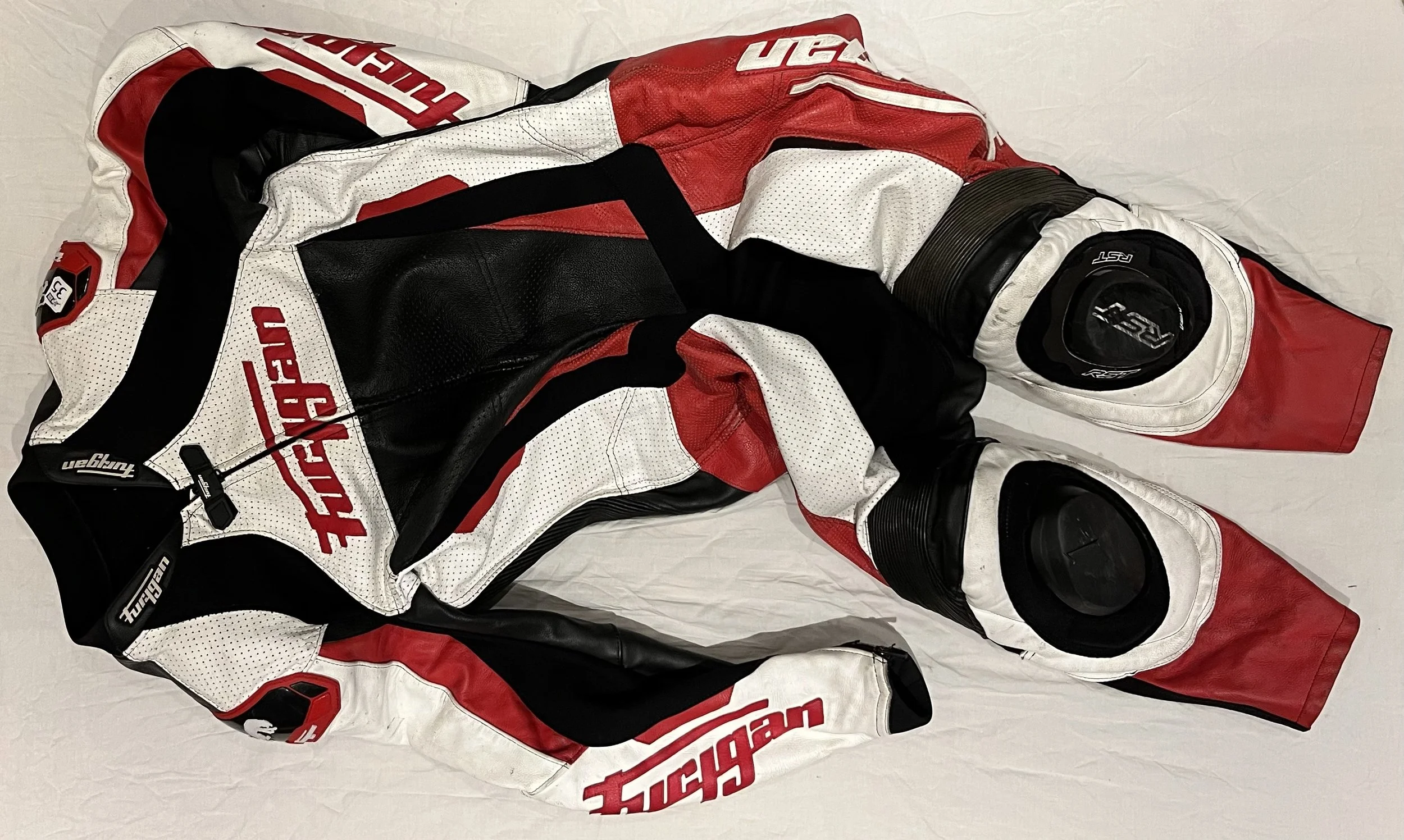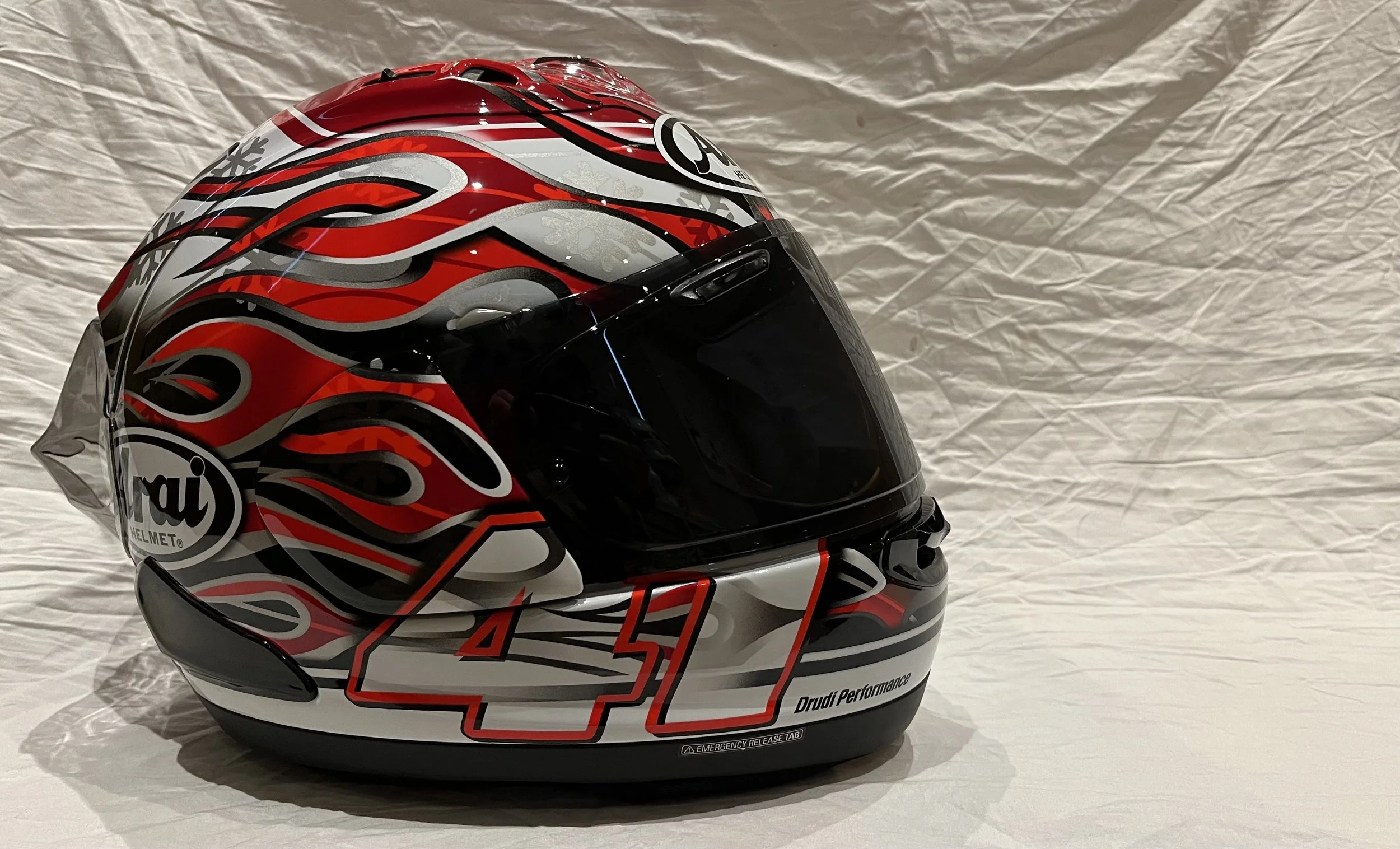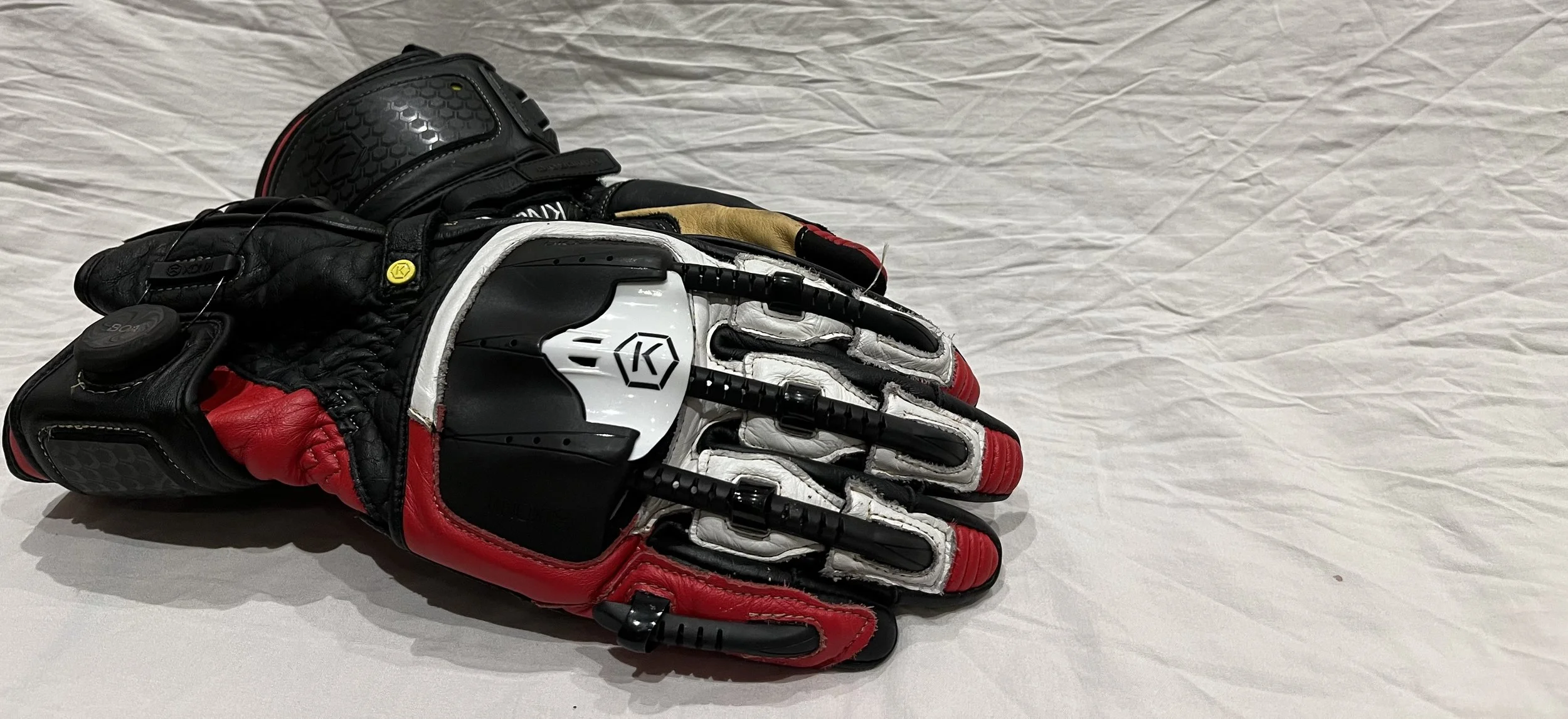Riding Kit
Wearing the correct kit on track not only saves your skin in the event of an ‘off’ it also offers the rider a huge amount of comfort. Being comfortable on a bike also allows us to get on with the important business of enjoying ourselves and exploring our potential.
Suits
One of the most obvious pieces that we wear on track is the race suit. The minimum requirement is a two piece suit with a full waist zip. Significantly more preferable is a full race suit. There should be armour on both knees, elbows and shoulders. If a new suit isn’t compatible with an airbag then just don’t buy one. Knee and elbow sliders are to be expected as standard.
Helmets
Attending any trackday is going to involve wearing a helmet. As with leather suits and gloves what we want our helmets to do is absorb the impact by allowing us to slide or ‘glance off’ objects. This lets the rider to dissipate that unwanted energy in a significantly safer and easier way. To this end we need a helmet that copes with the initial contact and then prevents secondary impacts by letting our heads slide rather than ‘catch’ the ground repeatedly exposing the wearer to repeated concussions and /or secondary injuries such as those that occur in the neck.
Boots
A good pair of boots are usually designed with feedback from professional MotoGP riders. The construction tends to involve lacing and fasteners which allow for them to be closed to the perfect fit. On the outer skin we’d expect to see armour on the shin, ankle and toes. Toe sliders are always going to be used. Even if you’ve never touched the ground mid corner you will after you’ve done a few trackdays and an unnecessary tear on your new boots will make you sad.
Gloves
The object of a good pair is to protect the wearers hands in the event of an impact. Too tight and feel and feedback from the bike is reduced and the gloves are much more susceptible to wear. Too large and control of the bike becomes more difficult. They may also detach from the riders hands in the event of an incident. Always choose the right size. If they don’t cover your cuffs you won’t be allowed out on the circuit.
Back Protection
A simple, flexible and lightweight piece of kit, a back protector is necessary to enable the wearer to ride safely on track. Much more preferable is the Airbag. These are 100% autonomous and smart. If it detects a fall then it activates. Once it does it inflates instantly, within 60 milliseconds, protecting the riders torso, spine and neck. It’s important to note is that you will not be allowed out on track without one or the other.
Base Layers
One of the open secrets of comfort is the base layer. Using products such as Hydrocool and Silverplus that make it much easier to get in and out of a one piece suit. They simply maintain the wearers body temperature once they’re put on. The other thing that you’re really going to find adds to your comfort is a pair of ear plugs. We’d recommend the ones that are connected to each other by a string, it makes them so much more difficult to lose!






